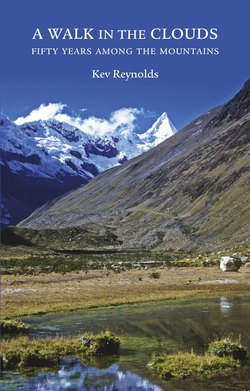Читать книгу A Walk in the Clouds - Kev Reynolds - Страница 16
Оглавление5
UP AND OVER
At 3404m Pico de Aneto (‘Nethou’ to the French) has the highest summit in the Pyrenees. First climbed in 1842, the standard route takes about five hours or so from the Renclusa refugio via the Aneto glacier, which these days is shrinking fast. In June 1973 it was somewhat different when we made a north to south traverse of the mountain. It’s just one of a number of ascents I’ve made in the Maladeta massif over the years, but it remains one of the most memorable.
Dawn broke as we topped the ridge separating the Maladeta’s glacier from that of Aneto, giving the perfect excuse to pause for a moment, to settle our breathing and watch as the sun climbed out of a distant hollow to cast its light on mountains filling every horizon. To the east the Forcanada shrugged its way out of a sea of cloud, and beyond that double-pronged peak one summit after another paid homage to the new day.
On the ridge wind-scuffed snow made for a cautious walk along the crest, where we skirted the insignificant Pico del Portillon Superior to reach the gap of the portillon itself. Peering into the gully that would lead onto the glacier, we discussed the need for crampons, but gambled on our ability to deal with the hard-packed snow-ice without them.
All the way from the foot of the gully to Aneto’s summit appeared to be an unmarked snowfield masking a glacier; and beyond a mound, which we took to be a pile of rocks, our ascent would take a direct route to the top of that graceful cone on a vast sheet of untrod powder whose pristine qualities both invited and excited us.
What’s more, we had the world to ourselves, for we’d seen no-one since arriving in the valley five days ago. The Renclusa refugio was still locked and shuttered, and the squalid annexe next door had received no visitors for weeks. It was too late for ski touring; too early for walkers and climbers. Unaware of our good fortune we’d arrived in a period of transition; we had winter’s purity above 1500m, but the first flowers bursting into life below the snowline where we’d left the tent. Summer was still some way off. Now on Aneto’s snow-covered glacier we had perfect conditions – and not a single boot print to follow.
As we prodded for unseen crevasses, the only sounds to disturb the morning were the squeak and scrunch of boots on the frozen crust – and our breathing. Despite the rising sun our breath steamed, but by the time we were halfway across the glacier the temperature was soaring and the soles of our boots balled with softening snow. The rhythm of ascent was interrupted now by the need to tap those balls free with our axes.
Above the Collado de Coronas the narrow ridge of the Pont de Mahomet brought us back to reality, for here the rocks were glazed with a winter’s worth of hard ice, and we were glad of the rope. Minutes later, and five hours after leaving the tent, I stood beside the summit cross and took a long, much-needed drink from my water bottle. Keith handed over some chocolate, and only then did we examine the vast array of peak, ridge and valley that fell away in every direction. So much was new to us; so many peaks unknown, untrod; so many valleys containing secrets. I felt a buzz of excitement in the sheer mystery of the world laid bare before us. On Aneto’s summit dreams were born, ambitions took shape. The Pyrenees, surely, would supply all the outdoor adventure a man could need, and I was ready for it.
Dragging myself out of dreams, I was aware that the sky was changing, so with our plan to make a north–south traverse of Aneto still intact, we studied our downward route on the south side of the mountain, comparing reality with its depiction on our map, and prepared to leave.
Retracing our route across the Pont de Mahomet to the Collado de Coronas, we then cut down to the left onto a little glacier tilting steeply into a basin. According to the map there were tarns down there, but as everything was plastered with snow we could only guess where they might be and trust that, should we wander across them, their covering of ice would be strong enough to support our weight. Taking a cold bath was not on our list of things to do that day.
Down we went, with an occasional involuntary glissade, losing height quickly until the gradient eased. There we unroped, stashed the rope on top of my rucksack and, looking back up the slope towards the summit cliffs (so different this side of the mountain), we noticed that the sky had disappeared and a grey wash of mist was spilling over the ridge. Morning’s promise had run out.
But we were past caring now. As the snow softened, thinned and turned to mush on our continued descent, we knew the day was ours. There were more ice-coated tarns, easy to avoid with water showing round their edges; there were streams and marshy areas; soldanellas – those tiny, tassle-headed harbingers of spring – poked through spatters of old snow. There was avalanche debris, a few spindly trees, then woods of pine and fir, and as the first crack of thunder sounded and rain began, we spied a glass-fronted hut and made a beeline for it.
Our timing, for once, had been impeccable.
